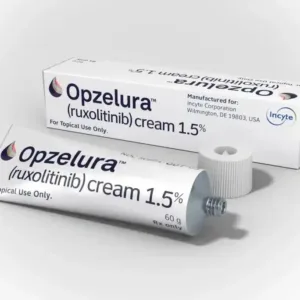TRUQAP CAPIVASERTIB 卡帕塞替尼
Truqap (capivasertib) indications
Truqap is a kinase inhibitor indicated in combination with fulvestrant for the treatment of adult patients with hormone receptor (HR)-positive, human epidermal growth factor receptor 2 (HER2)-negative, locally advanced or metastatic breast cancer who have one or more PIK3CA/AKT1/PTEN mutations as detected by an FDA-approved test, who have progressed after at least one endocrine-based regimen in metastatic disease, or who have relapsed within 12 months after completing adjuvant therapy.
Truqap (capivasertib) specifications
160mg and 200mg
Truqap (capivasertib) dosage
• Patients with HR-positive, HER2-negative advanced or metastatic breast cancer are selected for treatment with Truqap based on the presence of one or more of the following genetic alterations in tumor tissue: PIK3CA/AKT1/PTEN.
• Recommended dose: 400 mg orally twice daily, with or without food, for 4 consecutive days, followed by 3 days of rest.
Contraindications of Truqap (capivasertib)
Severe hypersensitivity to Truqap or any of its ingredients
Drug interactions of Truqap (capivasertib)
•Strong CYP3A inhibitors: Avoid concomitant use. If concomitant use cannot be avoided, reduce the dose of TRUQAP.
•Moderate CYP3A inhibitors: Reduce the dose of TRUQAP.
•Strong and moderate CYP3A inducers: Avoid concomitant use.
Use of Truqap (capivasertib) in specific populations
Lactation: Breastfeeding is not recommended.
Mechanism of action of Truqap (capivasertib)
Capivasertib is an inhibitor of all 3 isoforms of the serine/threonine kinase AKT (AKT1, AKT2, and AKT3) and inhibits phosphorylation of downstream AKT substrates. Activation of AKT in tumors is driven by activation of upstream signaling pathways, mutations in AKT1, loss of phosphatase and tensin homolog (PTEN) function, and mutations in the catalytic subunit alpha of phosphatidylinositol 3-kinase (PIK3CA). In vitro, capivasertib reduced the growth of breast cancer cell lines, including those with relevant PIK3CA or AKT1 mutations or PTEN alterations. In vivo, capivasertib alone and in combination with fulvestrant inhibited tumor growth in estrogen receptor-positive mouse xenograft models of cancer with alterations in PIK3CA, AKT1, and PTEN.
Truqap (capivasertib) Storage
Store TRUQAP in the original bottle at 20°C to 25°C (68°F to 77°F). Excursions are permitted within the temperature range of 15°C to 30°C (59°F to 86°F).
Truqap (capivasertib) Precautions
• Hyperglycemia: Assess blood glucose levels before starting treatment and periodically during treatment. Based on severity, withhold, reduce dose, or permanently discontinue Truqap.
• Diarrhea: Truqap causes diarrhea in most patients. Advise patients to increase oral fluids, initiate antidiarrheal therapy, and consult their healthcare provider if diarrhea develops while taking Truqap. Based on severity, withhold, reduce dose, or permanently discontinue Truqap.
• Cutaneous Adverse Reactions: Monitor for the following signs and symptoms of cutaneous adverse reactions. Based on severity, withhold, reduce dose, or permanently discontinue Truqap.
• Embryo-Fetal Toxicity: Truqap can cause fetal harm. Inform patients of the potential risk to the fetus and to use effective contraception. Refer to the full prescribing information for fulvestrant for pregnancy and contraception information.
Truqap (capivasertib) adverse reactions The most common adverse reactions (incidence ≥ 20%) of Truqap (capivasertib) include laboratory abnormalities, including diarrhea, skin adverse reactions, random blood glucose increased, lymphocytopenia, hemoglobin decreased, fasting blood glucose increased, nausea, fatigue, leukopenia, triglyceride increase, neutropenia, creatinine increase, vomiting, and stomatitis.
Share:
Products
Our offers
Health Classification
Let us work together to protect precious health




























